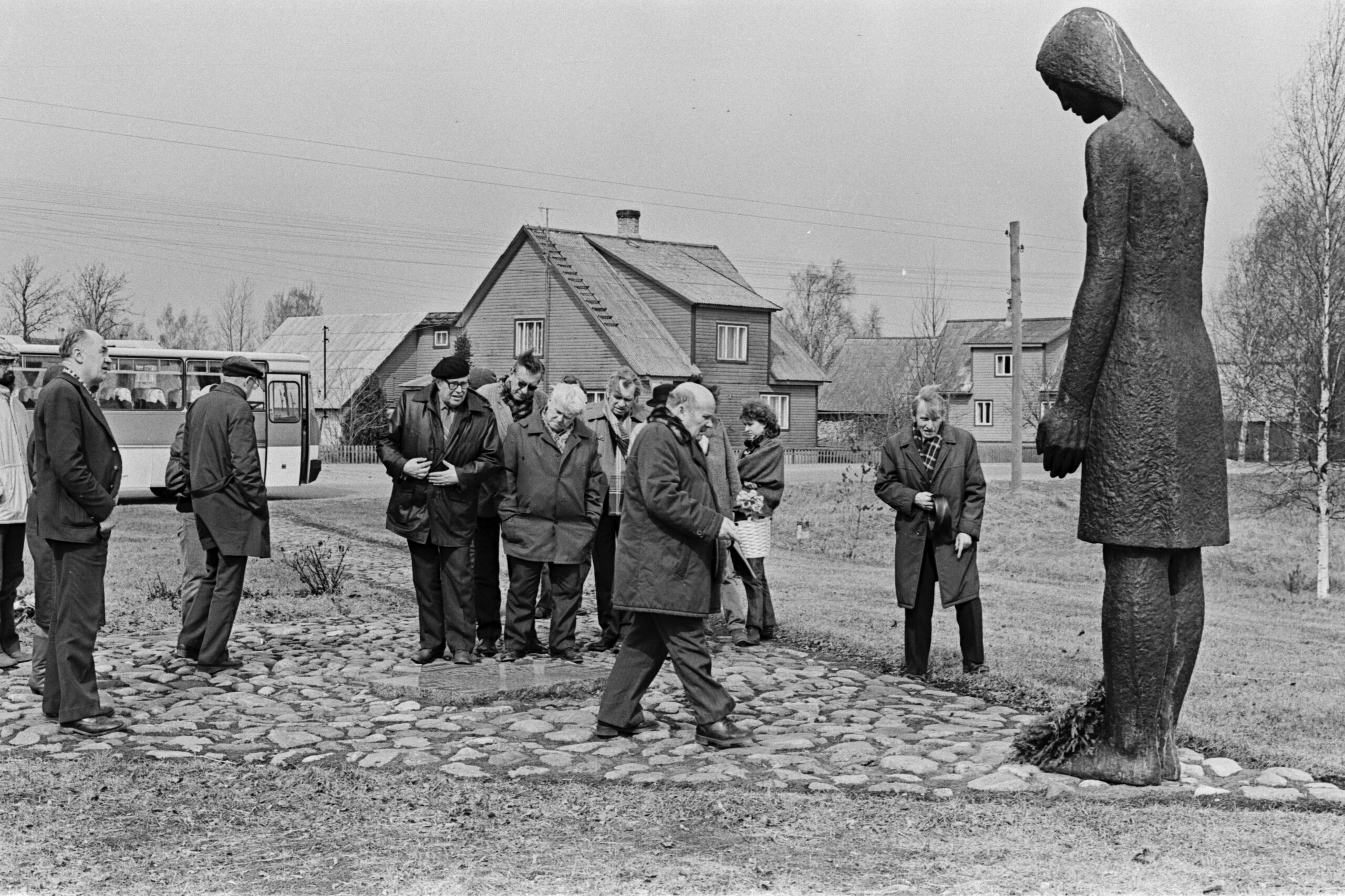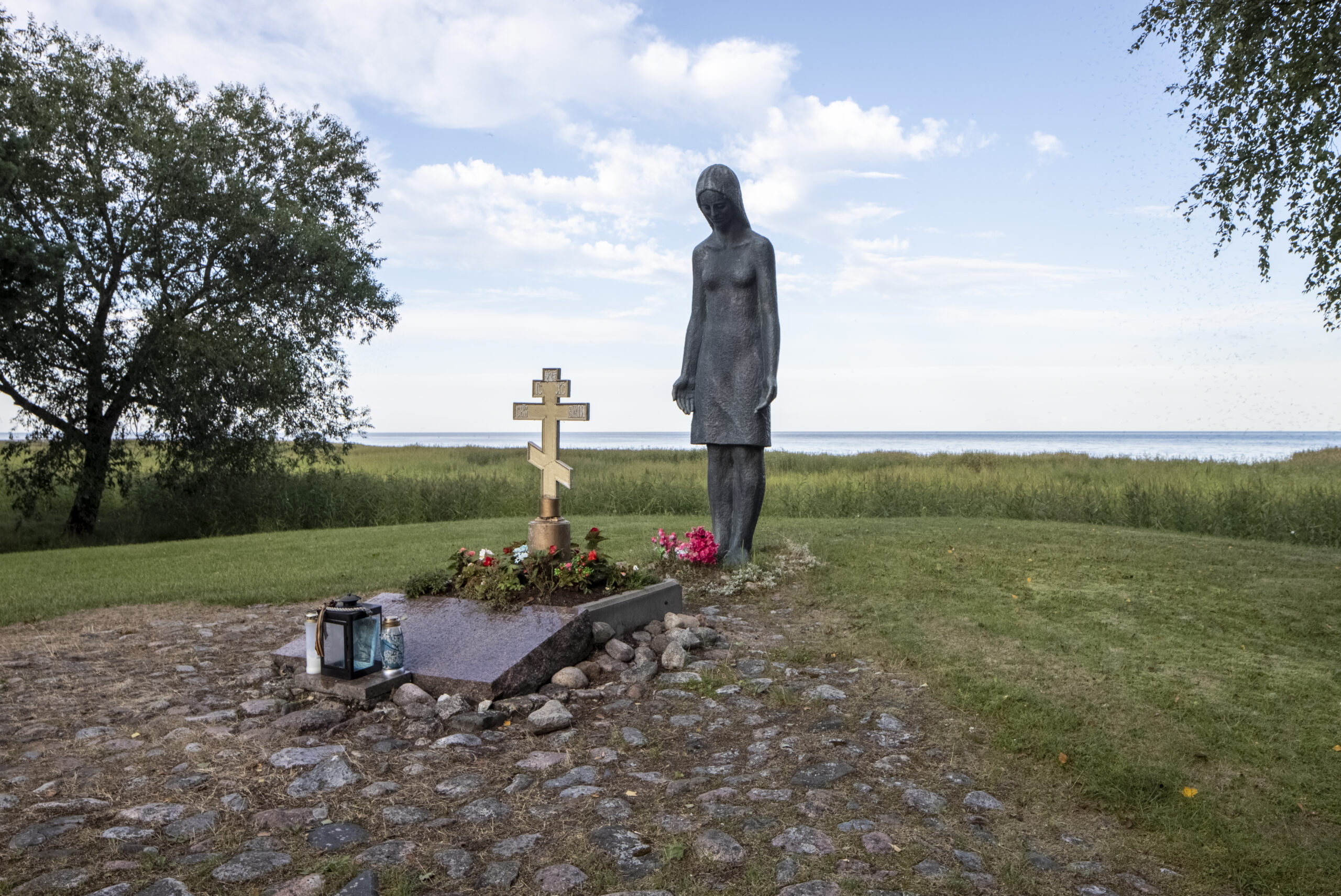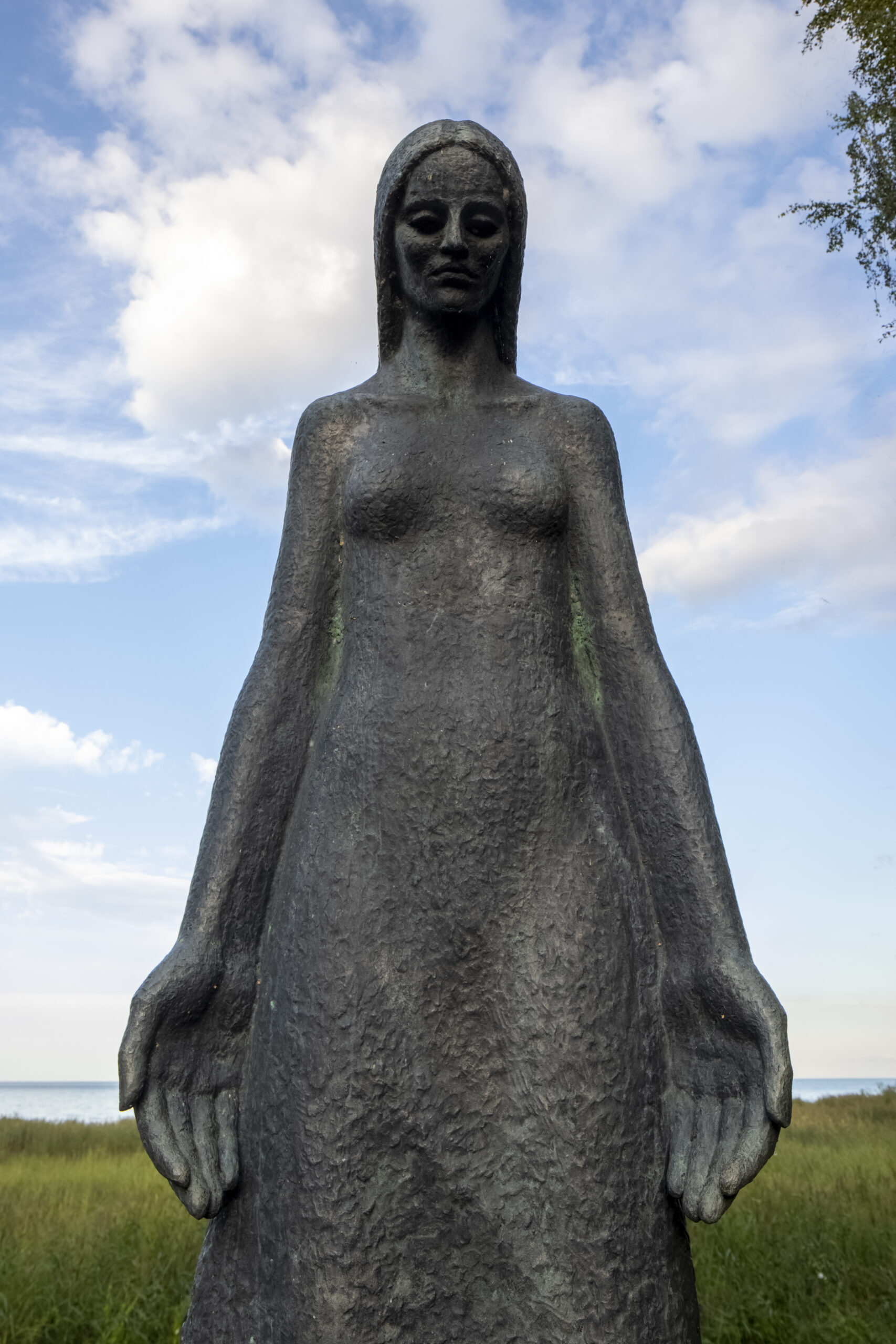Mass Grave of People Killed in World War II, Mustvee
Year of completion: 1973
Address: Jõgeva County, Mustvee Parish, Mustvee, Murru-Mustvee tee
Authors Elmar Rebane and Artur Lok
Bronze
Height 3 m
Cultural monument no. 5834
The monument of a mourning woman on a raised shore area by Lake Peipus in Mustvee has been erected in memorial of the Soviet soldiers that were killed in World War II. Although the battle of Mustvee in the fall of 1944 was quite successful for the advancing Red Army, especially its artillery, the memory of the summer preceding it was still fresh in mind. The fiery clashes on the Tannenberg Line had been extraordinarily bloody for both battling sides.
The monument is of a three-metre bronze woman, with two cobblestone paths leading to her. The paths collide as beams in front of her feet, creating the central core of the memorial, where a granite slab lies with a commemorating text. The photos taken after the monument’s opening in the early spring of 1974 are without flowers and celebration, the whole aesthetic is radiating austerity. Today, the space is decorated by bouquets brought by visitors, and a few flowerbeds in front of and around the monument, the site is surrounded by a dense layer of grass.
Considering the taste of the time, it may seem like the bronze artwork’s proportions are exaggerated. Upon close inspection, the shins, ankles, and hands seem perhaps too massive, but a glance at the monument from afar balances all of those distracting disharmonies. The monument is intended to be looked at from afar, and indeed, from a distance the piece looks completely appropriate.
The monument is respected to this day, with candles and fresh flower cuttings constantly at the feet of the mourning maiden, partially perhaps due to the local population’s larger composition of non-native speakers, or just people following Orthodox commemoration traditions more diligently. The latter is confirmed by the Orthodox cross placed in front of the monument. Man needs a place where a moment can be devoted to contemplation. Therefore, can we not agree already that there is enough historical perspective of the events, which led to the erection of such monuments, to understand their aesthetic and existential contribution to being human?
Enriko Mäsak









